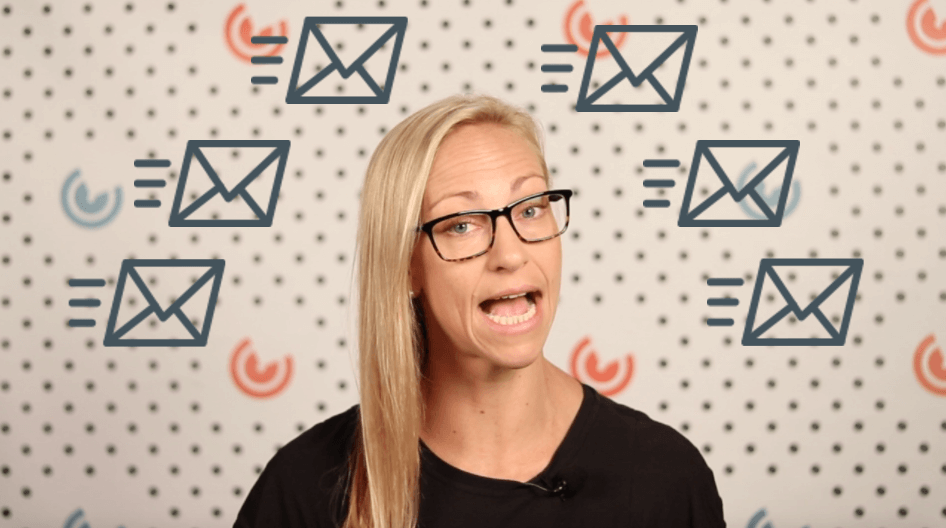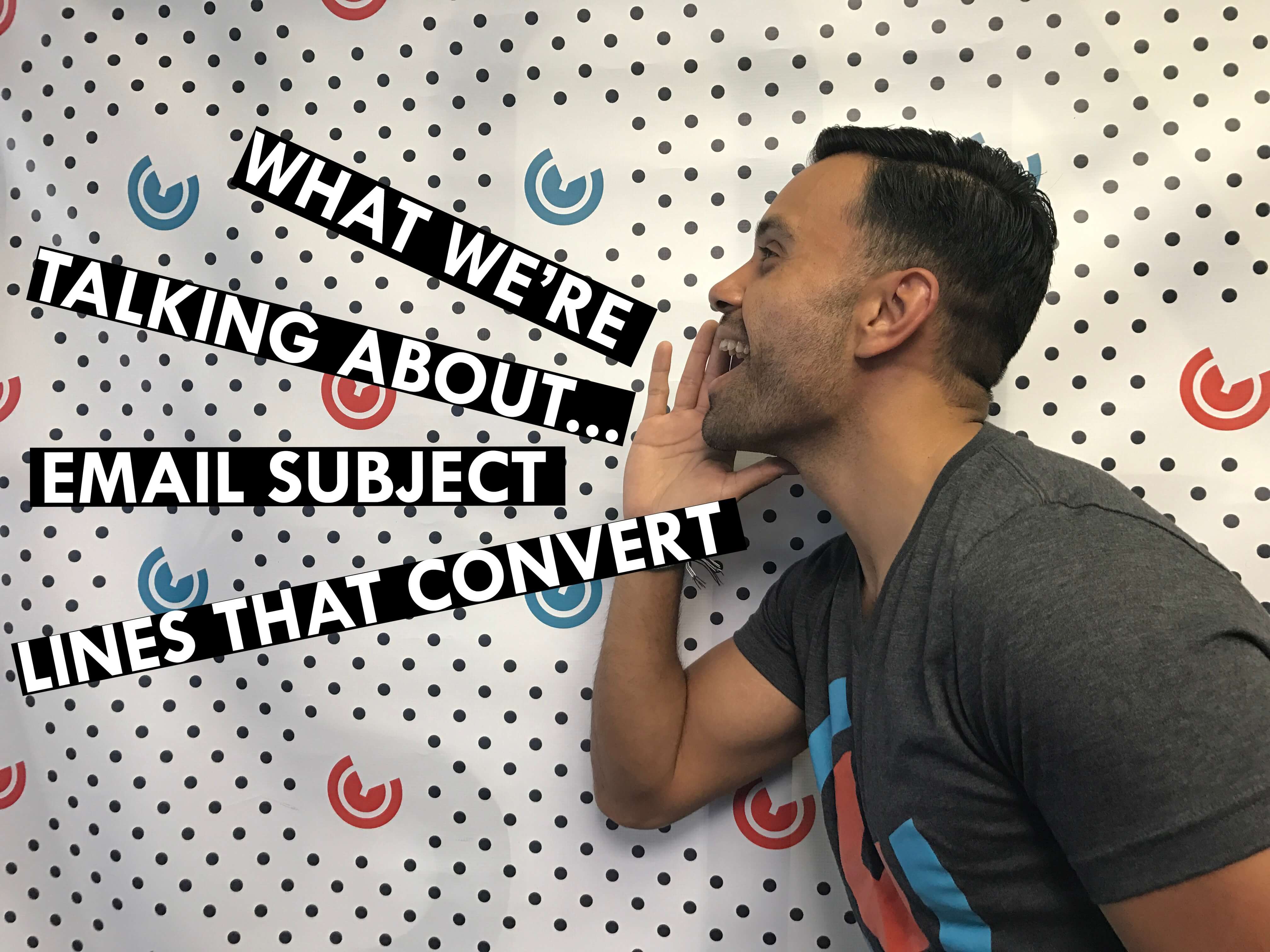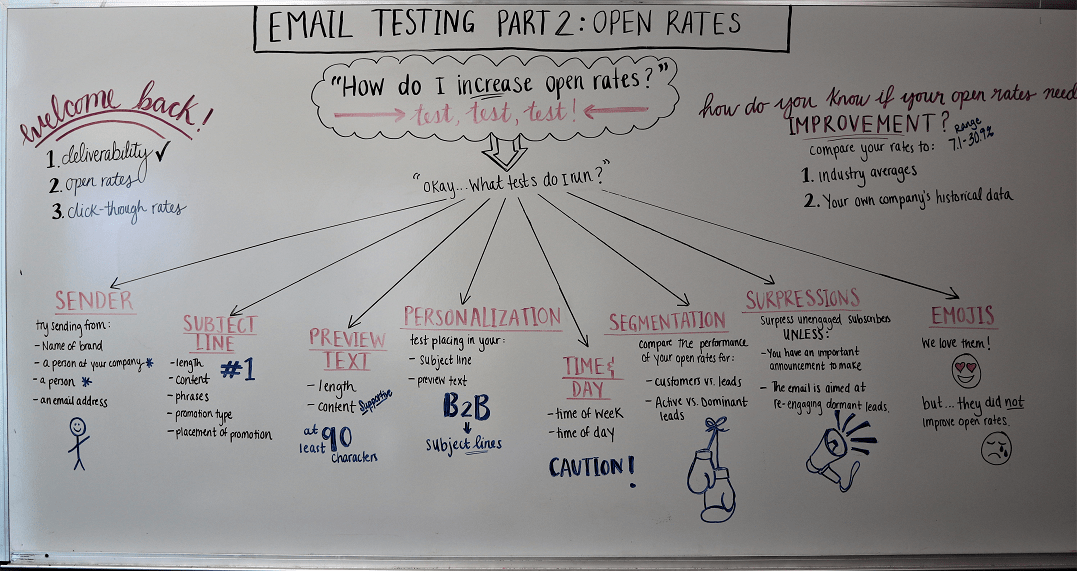10 Compelling Reasons You Need Email Automation
Anyone who has manually managed an email campaign, knows that staying on top of all of the related tasks like updating contact information and...
I know what I am looking for, and would like to chat.
A team of data-driven marketers obsessed with generating revenue for our clients.
Because the proof is in the pudding.
At Campaign Creators we live by three principles: Autonomy, Mastery, Purpose.
3 min read
![]() Tammy Duggan-Herd
:
10/07/17
Tammy Duggan-Herd
:
10/07/17

As I was listening to the Marketing Smarts podcast this week, the guest speaker, Nancy Harhut shared tactics based on the field of decision science (the study of mental shortcuts people use to make decisions) that you can easily implement to significantly increase email open and click through rates.
Here are three of our favorite tips you should start using right now to increase email conversion rates, and they will cost you literally nothing!
Using the right words in your email subject line can be more important than the email content itself. You have to entice your reader effectively in just a few words to open the email and continue reading. I'm going to share two types of trigger words that have shown to be effective in increasing click rates.
The first trigger word to use is “because.” According to research by Ellen Langer at Harvard, the word “because” is a proven compliance trigger, in other words - a word that influences people to automatically say yes to whatever you are asking them.
Why? Because we are used to seeing or hearing the word “because” followed by a good, logical explanation of why we should comply with a request.
For example, an experiment was conducted to investigate this phenomena using people waiting in line for a copy machine. When someone in the line asked the person in front of them if they could cut them, only 60% of the people allowed them to cut. But, when someone asked the person to cut because they had a copy to make, 93% allowed them to cut the line. The crazy part is that all of the people standing in the line of course had a copy to make, but the use of the word “because” triggered people to comply.
Another trigger to increase your click rates is by using words that express new or novelty. Our brains are hardwired to seek out information that is new and different, in fact every time you see something novel your brain releases dopamine, a reward chemical that motivates you to want to explore the topic further.
Using words like “introducing” “announcing” “new” and “discover” create this effect on the reader and influences them to want to pursue the subject. Although you may not be constantly producing material that is 100% new, when you make even small changes or updates you can use these keywords in the subject to boost your email open rates.
Now, it's one thing to get more people to open your emails, but what's the best approach to use when you want a fast response to your email?
This tactic is based on the principle of scarcity. In a nutshell, this principle explains the fact that people want what they can't have. A study ran by WorldData found a 39% lift in opening rates when scarcity was used in the email subject line.
There are two ways to use this principles; urgency or exclusivity. Urgency occurs when something is only available in limited quantities or for a limited amount of time. Exclusivity, on the other hand, is when a product or service is only available to certain people.
The best way to use urgency and exclusivity is to use terms such as “last chance” “final notice” or “only a few days left.” These phrases influence readers to act quicker and click on your email because they don't want to miss out on a good deal that may not come around again.
In fact, Hubspot found that using subject lines that evoked a sense of urgency, scarcity and exclusivity by using phrases like “today online” and “24 hour giveaway” resulted in 22% higher email open rates.
Using testimonials in your emails is another effective way to get your readers to respond to your email. Be sure that the people giving the testimonials are as similar to your reader as possible so that the reader can easily relate whether its because they have a similar job role, work in the same industry, or are the same age.
Another tip - the most compelling testimonials often start with what the reader is thinking — typically thoughts of doubt or skepticism. After opening your email many readers will be questioning whether or not it'll be worth their time to take the action you are requesting in your email.
For example, a great testimonial to provide if you want someone to register for your next event would be,
I have attended similar events put on by other companies in the past and not found a lot of value from them so I was skeptical, but I am so glad I attended this company's event - I met great people, learned something new and would definitely attend their events in the future.”
I challenge you to use at least one of these tactics in the next email you send, whether its in an email blast to your entire database or a targeted sales email. And be sure to let me know how it goes!
If you are looking to take your email marketing to the next level we suggest creating a lead generation campaign, our Introduction to Lead Generation will walk you step by step through creating one for your company.
This blog post is part of Your Definitive Guide to Lead Nurturing blog series and Your Definitive Guide to Conversion Rate Optimization blog series.

Anyone who has manually managed an email campaign, knows that staying on top of all of the related tasks like updating contact information and...

Email marketing is at its most powerful, and is delivering the highest ROI, according to Campaign Monitor. However, the amount of effort and time...

Welcome to Part 2 in our series on Email Testing. In Part 1 of our series, we covered the top 3 things you should be testing and optimizing: